FINAL PROJECT REPORT: Enhancing Resilience and Nutrition in the Peanut Basin of Senegal through Integration of Newly Released, Improved Cowpea Varieties
Project Title: Enhancing Resilience and Nutrition in the Peanut Basin of Senegal through Integration of Newly Released, Improved Cowpea Varieties
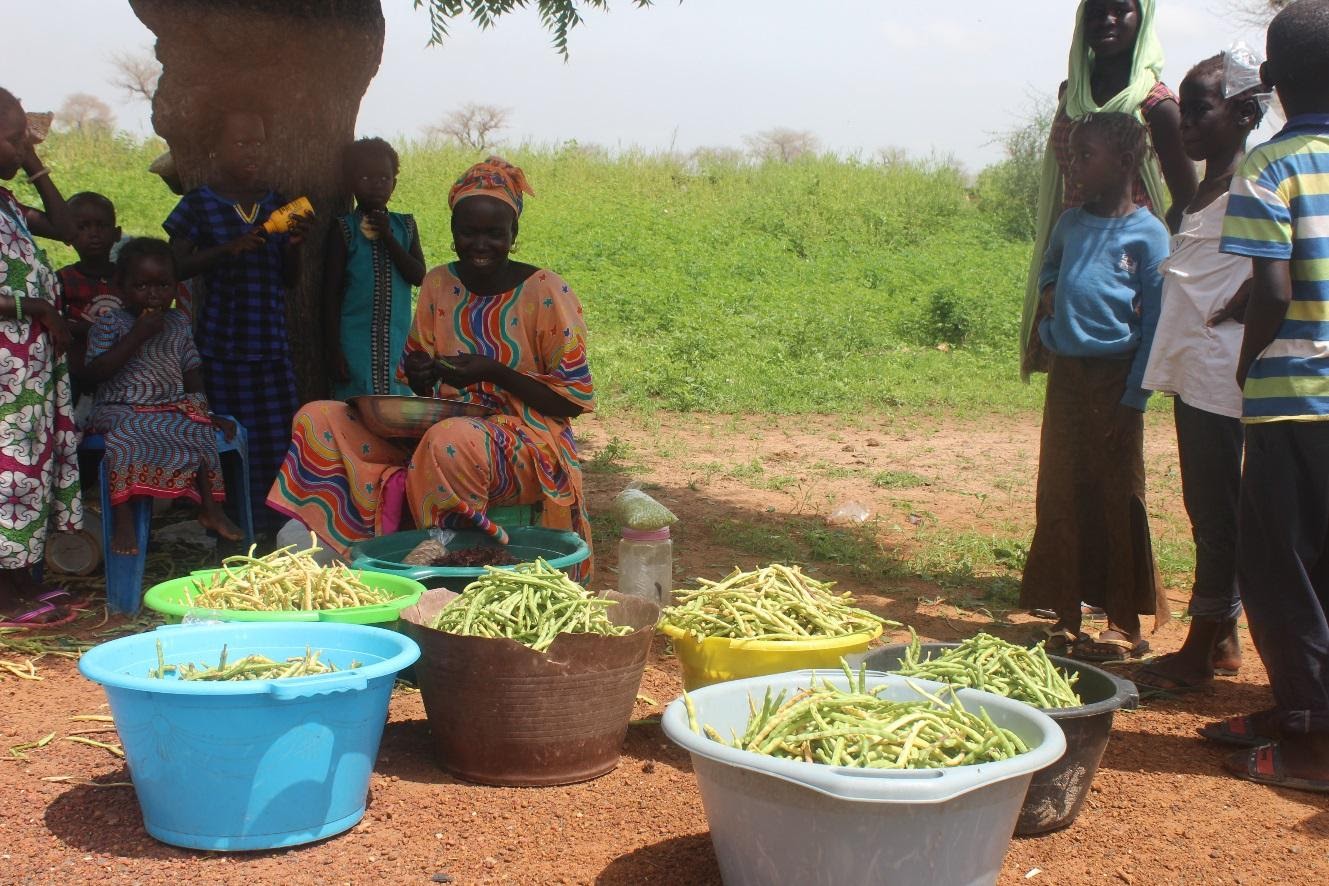
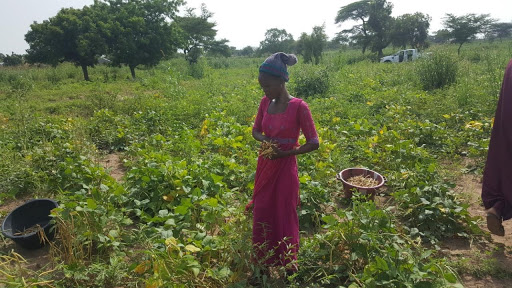
Executive Summary: Cowpea is one of the most important crops in Senegal for both improved agronomy and nutrition security. Recently, fast maturing, high-yielding and nutrient-dense cowpea varieties have been developed in Senegal, including Lizard, Leona, and Kelle but integration into sustainable farming systems has been limited. Cowpea is either rotated, intercropped or relayed with millet and provides millet with a source of nitrogen through biological nitrogen fixation (BNF). However, cowpea residues are often removed in their entirety and fed to livestock. It remains unclear whether the potential agronomic nitrogen value of cowpea to the millet system is due to root mineralization or residue mineralization. The cowpea residues are of high value for animal feed and the rapid maturing, nutrient dense, and high yielding varieties are of great importance to the resilience and socio-economic status of the household. Additionally, many of the leaves detach from the stem and remain on the field prior to collection for livestock feed. Using a "mother-baby" trial design, this study will evaluate the agronomic performance (i.e. Potential biomass field retention across a rainfall gradient) and socioeconomic synergies and tradeoffs that drive farmer adoption. ISRA will implement the "mother" trials at three sites across a rainfall gradient and Peace Corp and ANCAR will implement farmer field trials (i.e. "baby trials") and field schools to assess socioeconomic barriers to adoption.
Geographic Location: Bambey, Darou Mousty, and Boulel, Senegal
Project Partners: Feed the Future Innovation Lab for Collaborative Research on Sustainable Intensification (SIIL); Institut Senegalais de Recherches Agricoles (ISRA): Bambey, Senegal; in partnership with Agence Nationale de Counseil Agricole et Rural (ANCAR) and Peace Corps.
Project Goals and Objectives: The goal of this one-year quick-start project is to evaluate the scaling potential of newly released cowpea varieties across different agro ecologies and to identify best agronomic management practices for future research. Specific objectives of this research are: (1) evaluate the scaling potential of improved cowpea genotypes with different management practices across different agro ecologies and (2) empower farmers, extension agents, researchers and policy makers; and build human and institutional capacity.
Overview of Activities: Three “Mother” trials were conducted at Bambey, Darou Mousty, and Boulel and 25-30 “Baby” trials were conducted near to the “Mother” trials with approximately 100 “Baby” trials in total. Research parameters were primarily collected from the “Mother” trials and farmer feedback was primarily collected from the “Baby” trials. Research parameters have been analyzed and several have been incorporated into the graduate student’s thesis. Farmer field days were led by ANCAR and Peace Corp in conjunction with these field sites to share findings and to gain feedback from farmers. A graduate student was trained for their MS degree conducting research supporting these activities. A capacity building training on the Sustainable Intensification Assessment Framework was conducted at the beginning of the project with the project partners and collaborators to guide the farming systems/ cross-disciplinary assessment of dual-purpose cowpea.
Accomplishments: Mother-Baby Trials and Field days: Three “Mother” trials were established at Bambey, Darou Mousty, and Boulel and 25-30 “Baby” trials were established near each “Mother” trial. The nearly 100 “Baby” trials were established in partnership with Agence Nationale de Counseil Agricole et Rural (ANCAR) and Peace Corps. Prior to harvest, ANCAR and Peace Corp led farmer field day workshops to share project findings and to assess the new dual-purpose cowpea varieties.
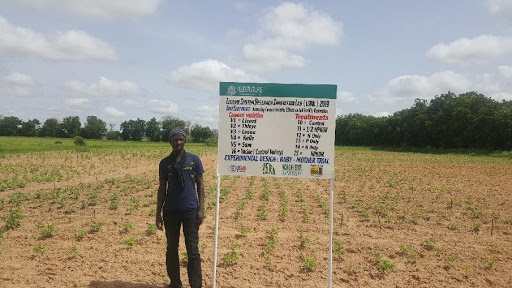
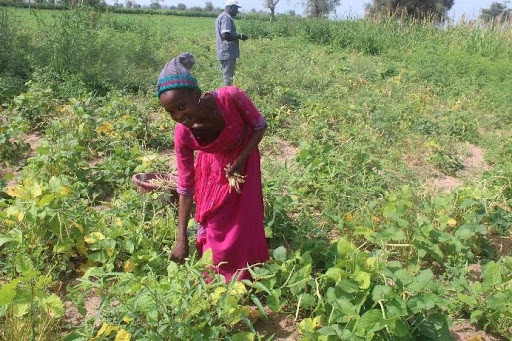
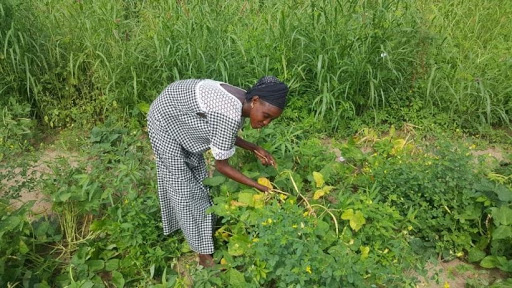
Farming Systems Training: A farming systems training was conducted in the first weeks of the project with the project team and partners to help support the farming systems assessment of trade-offs and synergies involved in the adoption of dual-purpose cowpea varieties. The project PI, Zach Stewart, led the training in Saly, Senegal and utilized the Sustainable Intensification Assessment Framework (SIAF) for this training (sitoolkit.com). This training also refinement of the targeted indicators to assess dual-purpose cowpeas for this research and future research.
Graduate Student Training: The project team supported the first year of Masters student training for Mouhamadan Lo Graduate student in partnership with the University Gaston Berger of Saint Louis, Senegal. The student is pursuing an MS in Plant Production and Agronomy under the primary supervision of Professor Mariama Dalanda Diallo. Mr. Lo’s research aimed to assess the response of newly released dual-purpose cowpea varieties according to environmental conditions GxExM. The study was implemented in the major cowpea production zone of Senegal following a soil fertility and rainfall gradient (i.e., 400 – 750 mm) in Senegal to allow for identification of suitable varieties for each environment in comparison with the old varieties.
Research Highlights:
Table 1: ANOVA table
Sites |
Parameters |
Pr (>F) |
|||
|
Biomass production |
pod production |
Grain production |
Harvest Index |
||
Bambey |
Varieties |
7.57e-05 *** |
0.00194 ** |
0.0092 ** |
0.382 NS |
|
Treatments |
0.6118 NS |
0.17823 NS |
0.5469 NS |
0.895 NS |
|
|
Treatments x varieties |
0.959 NS |
0.45192 NS |
0.6653 NS |
0.949 NS |
|
Darou_Mousty |
Varieties |
0.00935 ** |
7.06e-05 *** |
1.23e-05 *** |
8.36e-06 *** |
|
Treatments |
0.551 NS |
0.63 NS |
0.953 NS |
0.948 NS |
|
|
Treatments x varieties |
0.94427 NS |
0.466 NS |
0.56 NS |
0.878 NS |
|
Boulel |
Varieties |
0.0305 * |
0.224 NS |
0.511 NS |
0.225 NS |
|
Treatments |
0.864 NS |
0.729 NS |
0.535 NS |
0.559202 NS |
|
|
Treatments x varieties |
0.8375 NS |
0.922 NS |
0.902 NS |
0.678 NS |
|
NS: not significant at p<5%
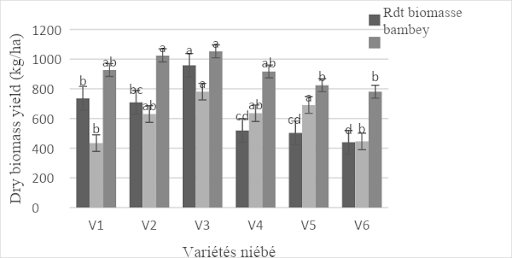
Figure 1. Biomass dry weight of cowpea production per sites
Statistic analysis shows significant biomass dry weight production difference (p<0.05) between varieties according to site. V3 (i.e., Leona) had the best biomass production in Bambey, Darou Mousty and Boulel. V6 (i.e., Yacine: control variety) produced lowest biomass at Darou Mousty and Bambey.
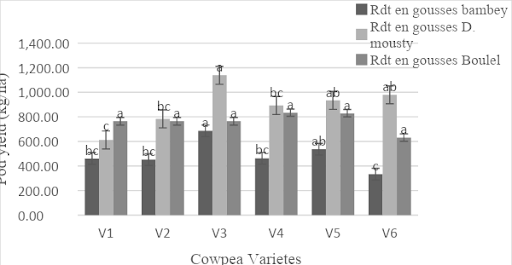
Figure 2. Cowpea pod production according to sites
Significant difference (p<0.05) were observed only at Bambey and Darou Mousty. The control variety (i.e., V6) had the lowest production in Bambey and Boulel but performed well in Darou Mousty.
Grain production
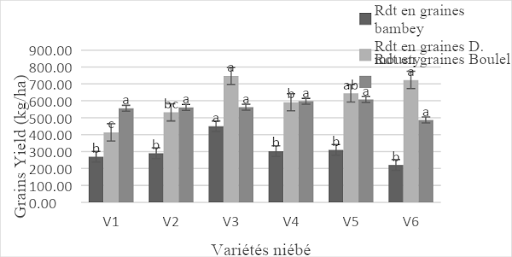
Figure 3. Grain yield per site
Significant difference (p<0.05) were observed in Bambey and Darou Mousty. Leona (V3) had the greatest grain production across all locations.
Cowpea Varieties harvest Index according to sites

Figure 4. Harvest Index according to varieties and sites
Significant difference at Darou Mousty sites. V6 (i.e., Yacine/ Control) had the best yield index of 30%. Cowpea varieties yield index in Bambey and Boulel are not significantly different at p<0.05.
Relation between biomass and grain production
- At Bambey, V6 (Yacine) had a coefficient near to one showing good relationship between biomass and yield production and could be considered as a dual-purpose variety.
- At Darou Mousty, all verities except V6 had a correlation coefficient near to 1 meaning all of them have potential of dual-purpose.
- At Boulel, the best relation coefficient was obtained with V1 and V4 have coefficients of 67% and 63%, respectively.
Table 5: Biomass and grain yield relations
|
Sites |
Varieties |
Y |
R2 |
R |
Bambey |
V1 |
0.2158x + 110.95 |
0.1482 |
0.38 |
|
V2 |
0.043x + 281.65 |
6.10-5 |
0.01 |
|
|
V3 |
0.2519x + 208.25 |
0.3025 |
0.55 |
|
|
V4 |
0.1625x + 215.39 |
0.0623 |
0.25 |
|
|
V5 |
0.4894x + 63.675 |
0.2339 |
0.48 |
|
|
V6 |
1.2486x – 328.66 |
0.6918 |
0.83 |
|
Darou Mousty |
V1 |
0.8948x + 24.086 |
0.5344 |
0.73 |
|
V2 |
0.518x + 204.63 |
0.7711 |
0.88 |
|
|
V3 |
0.7243x + 181.19 |
0.4995 |
0.71 |
|
|
V4 |
0.6219x + 196.41 |
0.795 |
0.89 |
|
|
V5 |
0.4009x + 366.97 |
0.6995 |
0.84 |
|
|
V6 |
0.5711x + 468.68 |
0.2967 |
0.54 |
|
Boulel |
V1 |
0.3551x + 226.75 |
0.445 |
0.67 |
|
V2 |
0.1121x + 446.31 |
0.0814 |
0.29 |
|
|
V3 |
0.1944x + 358.05 |
0.1317 |
0.36 |
|
|
V4 |
0.337x + 288.2 |
0.3927 |
0.63 |
|
|
V5 |
0.0058x + 603.23 |
4.10-5 |
0.01 |
|
|
V6 |
0.0643x + 536.87 |
0.0158 |
0.13 |
Y: Equation; R2: determining coefficient; R: Pearson correlation coefficient.
Utilization of Research Outputs: The research outputs have been integrated into the thesis of the graduate student and will be incorporated into the expanded research activity funded by the Legume Systems Research Innovation Lab. The work guided the proposal development and refined the priority research questions for the current dual-purpose cowpea research in Senegal. The research findings also influenced the Extension activities or ANCAR and Peace Corp with their Master Farmer networks in regards to which dual-purpose varieties were most suitable for the target locations and the appropriate agronomic practices to promote for dual-purpose cowpea cultivation.
Further Challenges and Opportunities:
There are still many questions that remain especially in regards to the socioeconomic aspects related to the adoption and trade-offs associated with adopting such dual-purpose varieties. Though these varieties have been available for the last 5-10 years, they have not had wide-scale spontaneous adoption. Even though these varieties have proven biophysical benefits, much remains unclear in the pathway of scaling.
Additionally, it has been observed that much of the cowpea leaf residues detach from the stem resulting in lower quality fodder for livestock consumption. This seems to be a major barrier for valorizing the dual-purpose cowpea variety residues in their current form. However, the leaf litter may be of significant value to soil health if it is retained on the field. The fate of the cowpea leaves is of significant importance for future research activities. Finally, the new varieties, even with good agronomy, did not significantly outperform the old variety (i.e., Yacine) in all locations. Targeting of varieties and agronomy will be very important as well as improved seed systems to have local access and information to such varieties.



 Print
Print Email
Email